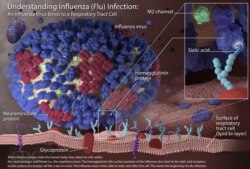Europe now is on high alert with new cases of coronavirus and deaths mounting in Italy, Germany, Spain, France, Austria, and Greece, while United States health officials warn of a possible pandemic and the inevitability of the disease spreading in the country.
After surfacing in late December in Wuhan, China, the coronavirus has spread to at least 50 countries (as of 2/27/2020), disrupted global supply chains and triggered a sharp downturn in financial markets.
But in a Feb. 26 interview in London, Oliver Baete, CEO of the Germany-based multinational financial services company Allianz SE, told Bloomberg News that the reaction was overblown.
“There is a lot of panic at the moment that is really not warranted,” he said. “If you think about the fundamental health impacts, they are significant but it is not like we have a real pandemic. It’s like a strong flu.”
Baete noted fears about a lack of medical supplies when the sick show up at hospitals. “The issue is really that people do not know what to do, and we are behaving in a really disorganized way,” he said.
Baete’s claim that COVID-19 is “like a strong flu” can be viewed in two ways, however. On the one hand, there are many similarities in symptoms and the way the flu and coronavirus are is spread.
On the other hand, the flu is blamed for as many as 61,000 deaths in the United States alone each year, so the comparison hardly minimizes the potential dangers of COVID-19.
(The virus that causes COVID-19 has been identified as SARS-CoV-2 or severe acute respiratory syndrome coronavirus 2).
Indeed, as coronavirus cases continue to emerge globally, scientists are urgently studying its characteristics, but it may be too soon to draw conclusions about fatality rates, transmission and who is most vulnerable to infection or complications.
“There are so many huge unknowns about this outbreak,” said Professor Mark Woolhouse of Edinburgh University told The Guardian this month. “For example, we don’t know just how infectious people are before they show symptoms. That makes it impossible to predict what is going to happen.”
“The trouble is, this outbreak is caused by a very different virus. And unlike flu, there are no vaccines or treatments and, crucially, no pre-existing immunity in the population.”
Baete joins the ranks of those who’ve voiced concern about overreacting to the virus and the potential damage to the world economy. They include Kristalina Georgieva, managing director of the International Monetary Fund.
“While we are focused on the coronavirus, we don’t want to see attention derailed from other very important issues for the stability and prosperity of the world economy,” she said earlier this week.
Most prominently, there is U.S. President Donald Trump, who boasted in a Tweet that that the coronavirus “is very much under control in the USA” and blamed news media for “doing everything possible to make the Coronavirus look as bad as possible, including panicking markets, if possible.”
Then on Wednesday, Trump held a news conference where, flanked by U.S. health officials, he put Vice President Mike Pence in charge of the country’s coronavirus response effort – while proclaiming “tremendous success” so far in preventing an outbreak.
He downplayed the stock market drop, assigning responsibility in part to his Democratic political opponents, and also compared COVID-19 to the flu.
“Over the last 10 years, we’ve lost 360,000. These are people that have died from the flu, from what we call the flu,” Trump said.
COVID-19, he said, "…[i]t's a little like the regular flu that we have flu shots for. And we'll essentially have a flu shot for this in a fairly quick manner."
Health officials have published comparisons between the two diseases based on preliminary data on COVID-19.
Similarities include symptoms ranging from fever, cough, body aches, to fatigue and diarrhea. Both diseases can vary in intensity from mild to severe to fatal, can result in pneumonia and are spread through droplets in the air from coughing, talking or sneezing.
One difference is that the flu is caused by a variety of different viruses. Another is that COVID-19 may spread through what’s called the airborne route – when droplets in the air infect people even if the ill person has left. Vaccinations are available for the flu and are successful in reducing the severity of illness. Vaccine is under development for COVID-19.
The latest reports show 82,549 confirmed infections worldwide with 2,810 deaths and 33,252 recoveries.







